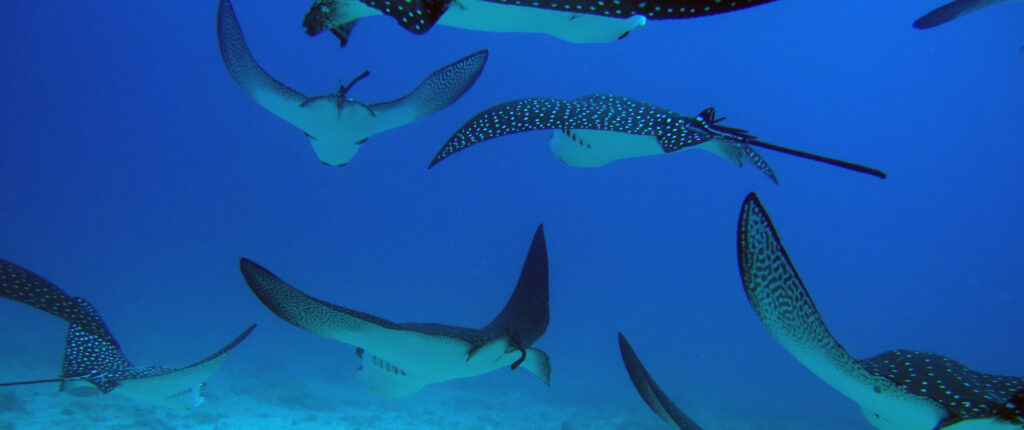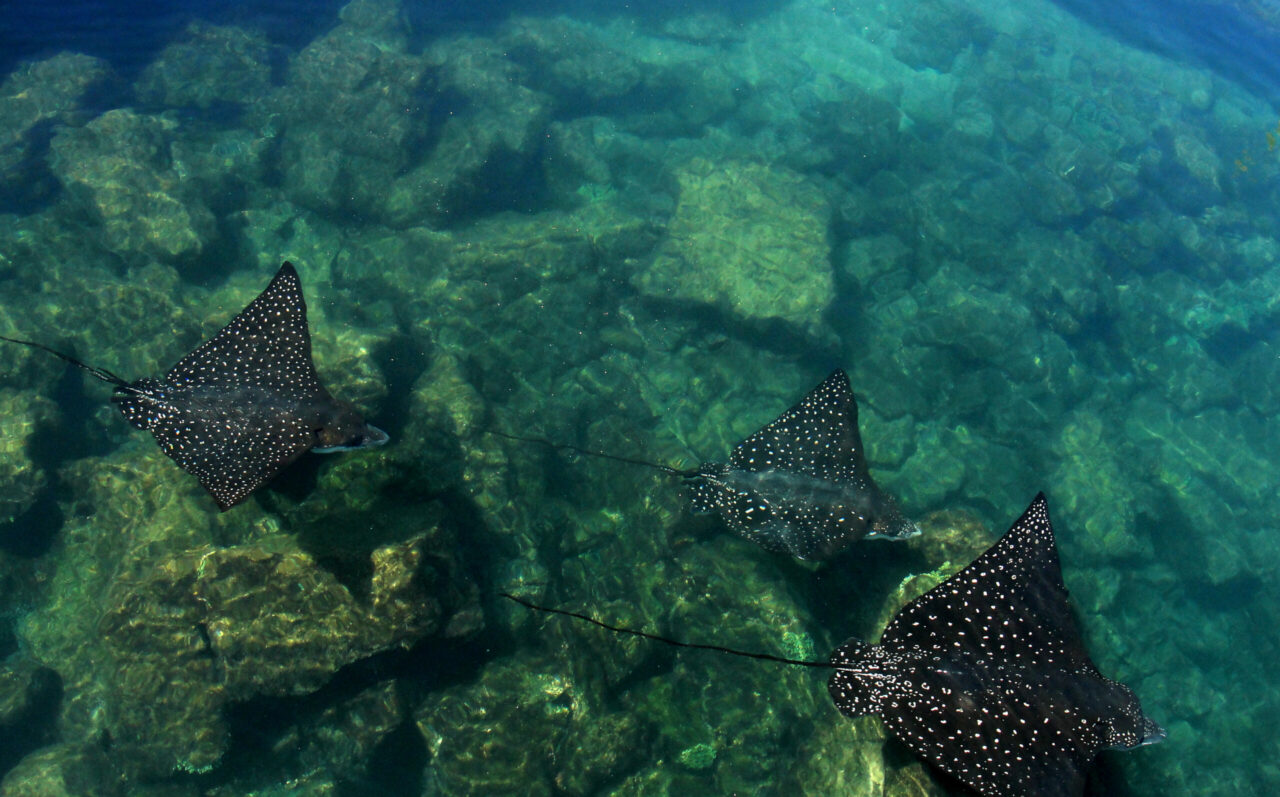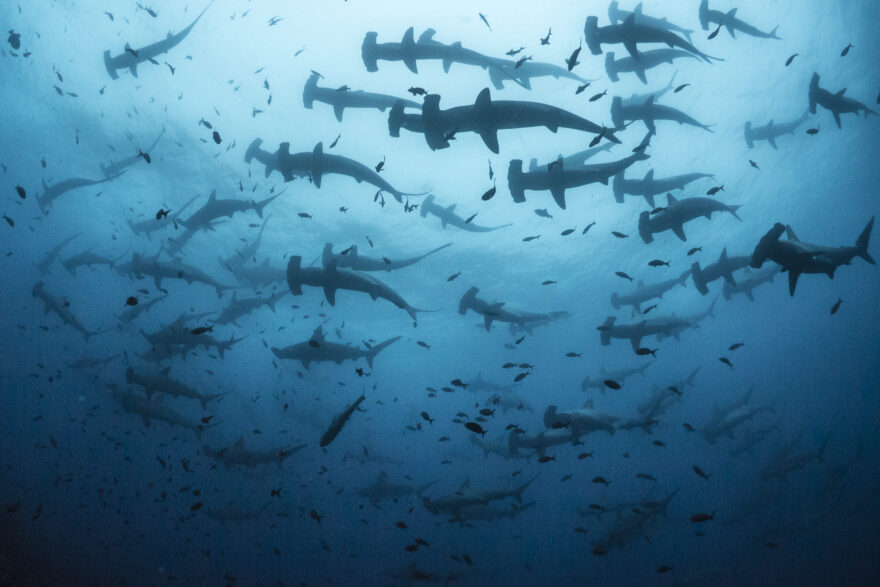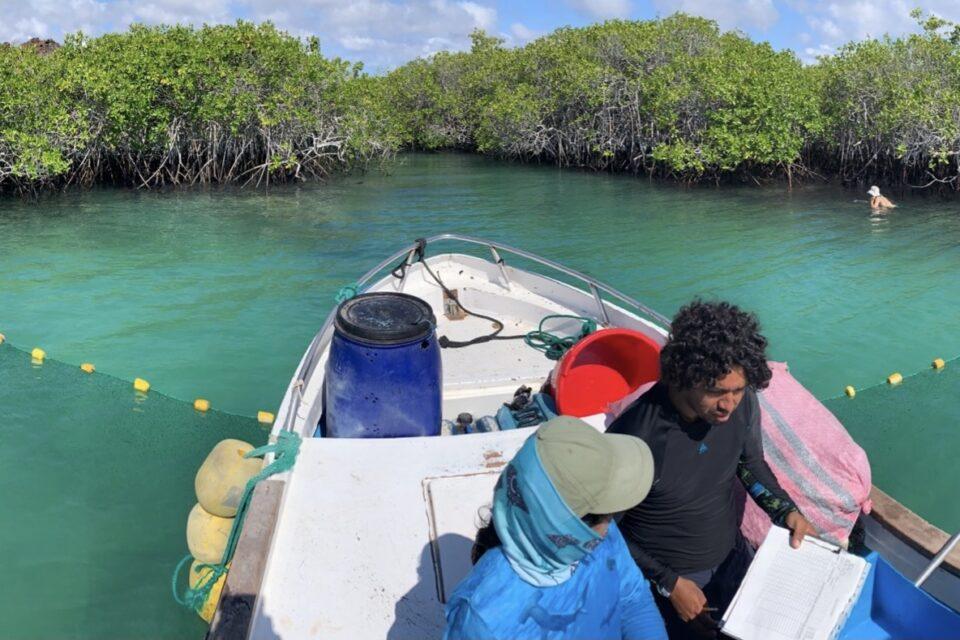
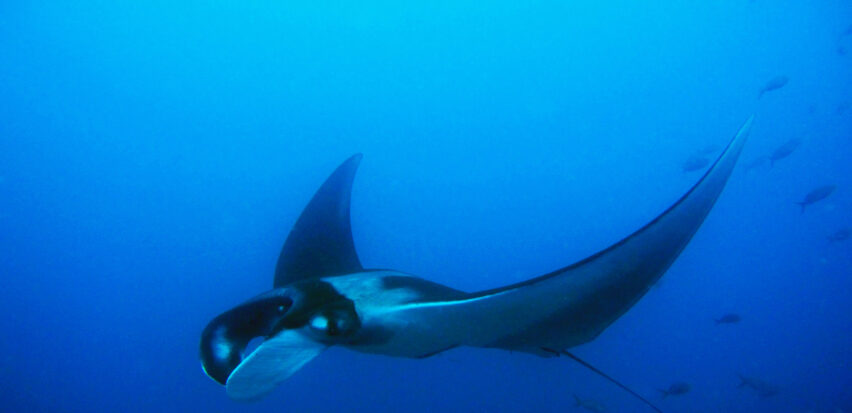
Overview
The Galapagos Marine Reserve (GMR) is home to over 50 species of sharks and rays, yet there is very little data for rays in Galapagos. Around several of the islands, including Isabela and San Cristobal, there are sheltered mangrove lagoons that provide the perfect nursery grounds for both sharks and rays. This project is looking at three species – giant oceanic manta rays, golden cownose rays and spotted eagle rays – in an effort to improve our scientific understanding of rays in Galapagos, including where they give birth and how connected the populations are between islands, helping us to prioritise and target management efforts across Galapagos.
Project Partners



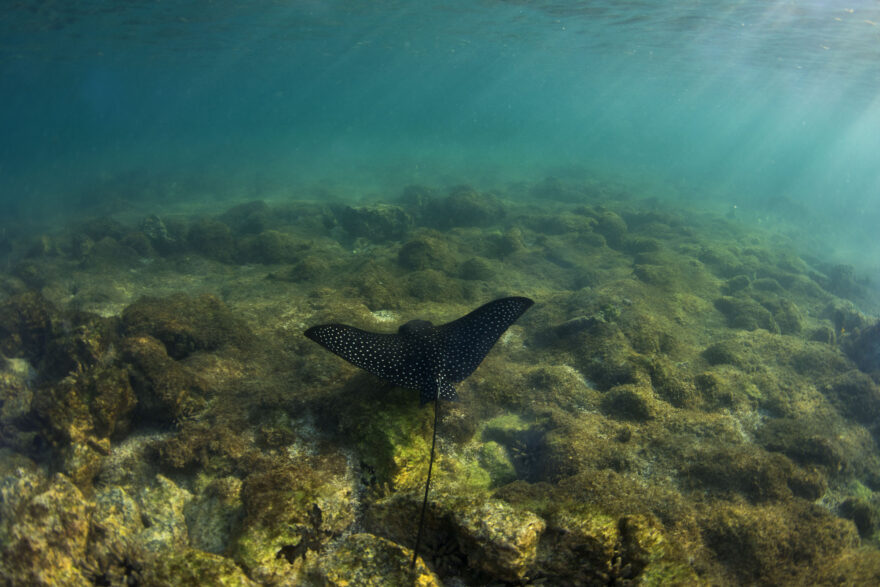
The problem
Due to the lack of data on rays in Galapagos, their population status and conservation needs are poorly understood. To effectively protect these species from threats such as fishing and tourism activities, it is essential to conduct research to find out more about their population dynamics. This includes where they go, their population status, where they breed and how many there are. Once these questions have been investigated, we can collectively work towards ensuring their conservation needs are met.
This project investigates three different ray species found across the Archipelago
- The giant oceanic manta rays (Mobula birostris) is Endangered globally, and early genetic studies have indicated that there is likely a resident population in Galapagos. They are found in significant numbers around the coast of Isabela island.
- The golden cownose ray (Rhinoptera steindachneri) is considered Near Threatened throughout its range, however no assessment to date has been made on the Galapagos population.
- The spotted eagle ray (Aetobatus ocellatus) is considered Vulnerable throughout its range, and it has recently been recognised that the Galapagos population may be a separate species .
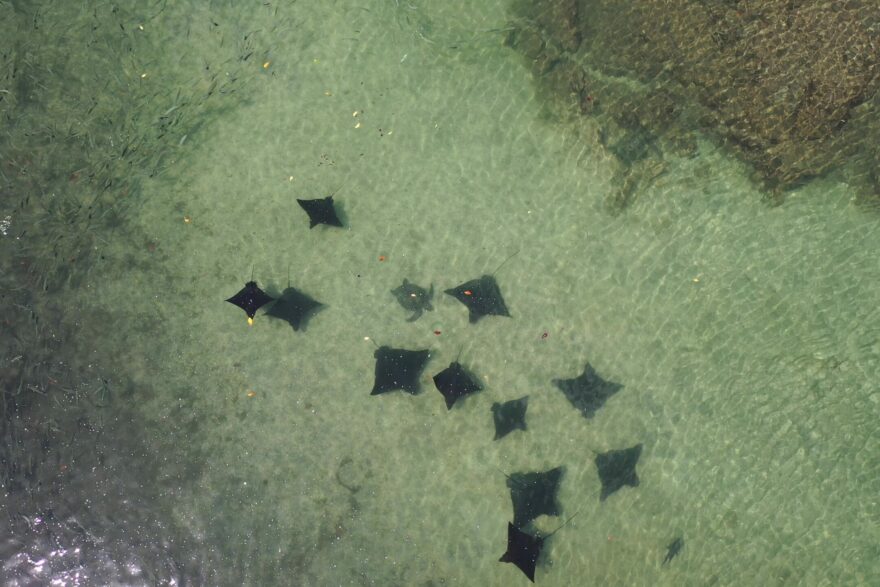
How we’re tackling it
Dr Diana Pazmiño (based at the Galapagos Science Center) leads our Endangered Rays of Galapagos project, looking at the connectivity of these three species between islands and bioregions in Galapagos.
Key activities delivered by Diana’s team include using drones to locate and count the number of rays, tagging rays with acoustic and satellite tags to track their movements over time, and taking tissue samples for genetic analysis. Due to the individually unique spot patterns on eagle and manta rays, the team also take photo-ID pictures, adding vital information to the growing photo database.
Taking tissue samples to analyse their genetics is crucial to assess population status and understand connectivity within the Galapagos Islands. Samples will also be used to compare the giant oceanic manta ray aggregation near the coast of Isabela island with the well-studied manta population off the coast of mainland Ecuador.
All of the information we get from these activities will help us better protect rays. Recently, this project contributed to the designation by the IUCN of nursery grounds in Galapagos as one of the first Important Shark and Ray Areas (ISRAs) globally – an important first step to conserving vulnerable ray populations and other species that rely on sheltered mangrove lagoons in their lifecycle.

Project goals
- To undertake a comprehensive study of golden and spotted eagle rays in Galapagos to inform better conservation management.
- To undertake a study of Galapagos’ oceanic manta ray population to better understand its connectivity with the population off mainland Ecuador.
This project is kindly supported by
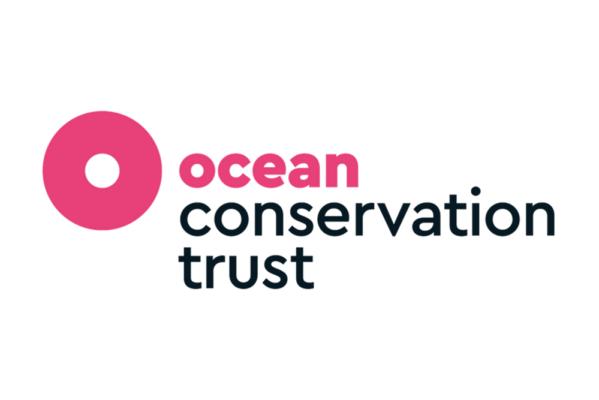
Project updates

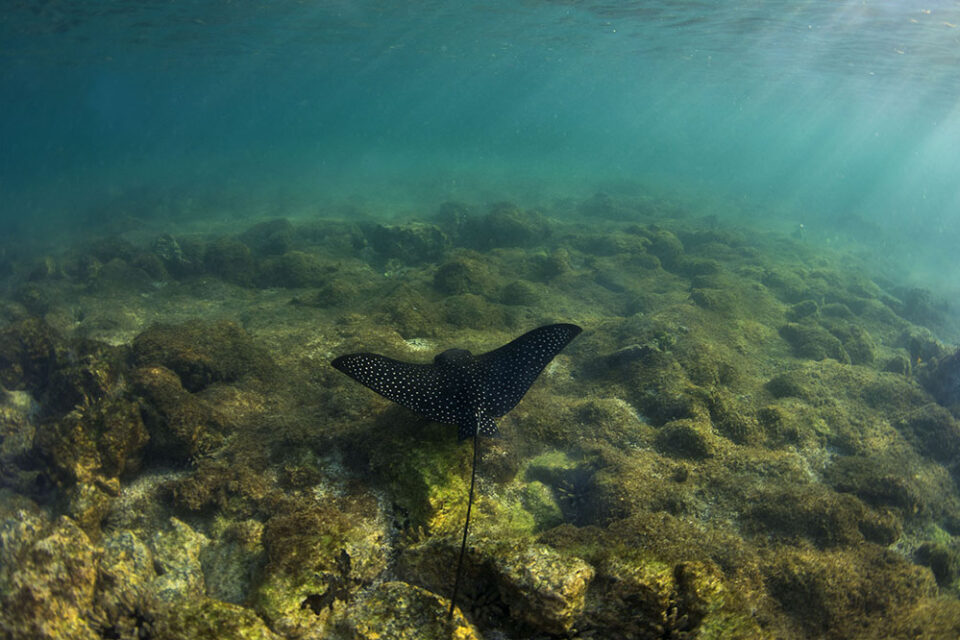
Barriers in a sea of sharks and rays: The role of genetic connectivity in the ocean

Latest shark nursery news
How you can help
With your help, we can safeguard the future of these Enchanted Isles.
